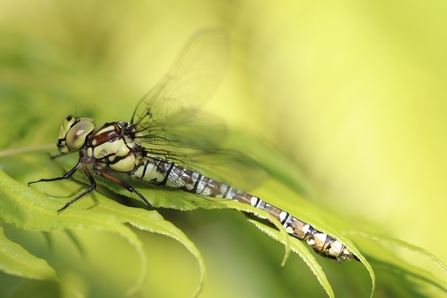Near the Crannog at Lakeside, Eleanor Colver, Conservation Officer of the British Dragonfly Society (BDS), will present a plaque and unveil a colourful information board about the life of dragonflies.
A launch event to mark this occasion is being held by the Llangorse Dragonfly Group (LDG), which includes staff and volunteers of the Wildlife Trust of South and West Wales, Biodiversity Information Service, Brecon Beacons National Park, and local community. This will include pond dipping (11am & 1pm) walks and dragonfly related crafts suitable for the whole family. There will also be a guided walk around the lake at 2.30pm.
Hotspots are chosen by BDS as places which offer visitors the opportunity to see and learn about dragonflies. Since 2014 the Society has designated seventeen sites. The nearest to Brecknock is at the Shropshire Hills Discovery Centre, Craven Arms. Future public events are planned at Llangorse Lake in the future.

